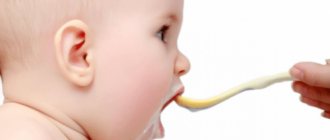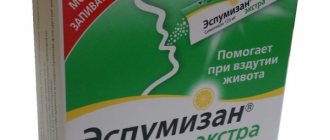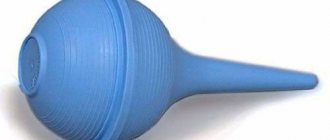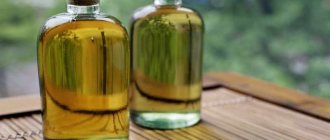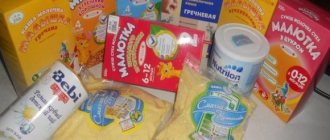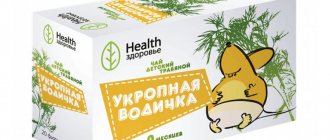Why does a baby need Plantex?
The product helps fight abdominal pain in babies - they are called colic. They often bother newborns and infants up to 3 months of age and arise due to the immaturity of the digestive system and a lack of enzymes. As a result, food and gases are retained in the intestines, causing cramps. May be accompanied by regurgitation and loose stools. Of course, at this time the child cries, sleeps poorly and refuses to eat.
Over time, when the digestion process normalizes, colic goes away, and the need for plantex disappears. This usually occurs at 3–4 months. But in some cases, non-threatening pain associated with eating can persist for up to 1 year or older. They also worry when the baby’s diet includes dishes made from peas, beans, and cabbage.
When there are such symptoms, in addition to Plantex, use simple methods that will alleviate the baby’s condition:
- after eating, hold the baby for 15 minutes in an upright position, as people say - “soldier”, until he burps excess air;
- during colic, apply a warm heating pad to your stomach, and be sure to check the temperature of the heating pad so that it is not too hot;
- massage the tummy - clockwise, with soft stroking movements, slightly pressing on the tummy. Make sure your hands are warm and dry;
- place the baby on his tummy - this can be done after the navel has healed. It can be on a bed or changing table, but if the mother simply places the newborn on her chest or stomach, this will be doubly useful, since close contact with the mother will calm him down;
- If you are breastfeeding, be sure to monitor your diet and remove from it foods that contribute to gas formation - legumes, fruits, cabbage, fresh yeast bread.
When shown
In most cases, Plantex is prescribed for colic in infants.
At the same time, the tool has a broader functional purpose, namely:
- For constipation that occurs due to weakness of the abdominal muscles or food poisoning.
- For stabbing and cutting sensations in the abdominal area.
- If the absorption of nutrients from food is impaired.
- To relieve spasm of the abdominal muscles.
- To remove excess gases from the body.
- To restore a smooth digestive process.
At what age can Plantex be taken? The manufacturer recommends using the drug from two weeks after birth, when negative reactions from the digestive system occur.
Plantex composition
The product is produced in the form of granules. The granules are packaged in 5 gram bags. Plantex contains aqueous fennel extract as an active substance, and fennel essential oil acts as a flavoring agent and enhances the effect of the extract. There are also auxiliary components - lactose, dextrose, acacia gum. They improve the taste of the drug, which is especially important for children, and promote its rapid absorption.
The active substance - fennel fruits and its oil, is a herbal antispasmodic. This herbal medicine stimulates digestive processes by increasing the secretion of gastric juice. Thanks to this, food is quickly digested and absorbed. Peristalsis is also normalized, that is, contraction of the intestines and movement of the food bolus along the digestive tract.
Fennel prevents the accumulation of gases, promotes their rapid release, and eases cramps. Decoctions or teas are made from it to improve digestion. Plantex is different in that it is completely ready for use and is convenient to dose.
Composition of the drug
Plantex contains only natural substances of plant origin, components that are safe for the baby’s health. This allows it to be used almost from the first days of a person’s life.
So, the main active component of the product is fennel extract, which has unique properties. Fennel contains substances that restore a stable digestive process.
In addition, the product also contains lactulose, acacia gum, anhydrous dextrose and excipients.
The drug is available in individual sachets containing brown granules for oral use. The granules can also be dissolved in liquid, including breast milk.
Indications for use of Plantex
Plantex is recommended for use in children from two weeks of age and older. It is shown:
- As a preventive measure - when changing food types. For example, when switching from breastfeeding to artificial or mixed feeding. Or when the baby is prone to excessive gas production. This can happen after illness, intestinal infections, or taking antibiotics. Colic in such situations is a concern until the microflora is completely restored. During this time, in addition to probiotics and prebiotics, agents are prescribed to improve the passage of gas.
- As a remedy for intestinal spasms accompanied by restlessness in the baby. The pain can be so severe that the baby refuses to eat and sleeps poorly. Even if he sleeps, he wakes up in pain and crying. Of course, you cannot endure the pain and you need to alleviate the baby’s condition. If the baby refuses to eat for a long time, he will lose weight. Dehydration may develop. And constant and severe spasms can lead to intussusception and intestinal obstruction.
Plantex's analogues
Speaking about analogs of Plantex, it is worth understanding that this is a herbal medicine based on fennel extract and essential oil. Therefore, all other herbal remedies and teas containing fennel will have a similar effect. Examples include:
- fruits of dry dill (fennel);
- tea “Babushkino Lukoshko”;
- Hipp tea.
Plantex has a number of advantages compared to the above analogues:
- The quality control of the drug is not inferior to the control in the production of pharmaceuticals.
- The effect of Plantex has been clinically proven.
- The concentration of nutrients remains constant throughout storage.
- The dosage of the drug ensures its microbiological purity.
Thus, if there are no contraindications for use, it is still better to choose Plantex and not its analogues.
If we draw an analogy not by composition, but by purpose, then the range of drugs and means will be much larger. The most famous drugs are: Espumisan, Bobotik. Read more about other anti-colic remedies in this article.
How to give Plantex to a newborn
The drug should be taken orally, after meals. Since small children require breastfeeding often and sleep a lot, it is necessary to adapt to giving the drug between meals.
The dosage for each age is as follows:
- Newborns and children up to one year of age should be given 1–2 sachets per day, which is 5–10 grams of the drug. This dose should be divided into two or three doses;
- From one to 4 years of age, 2–3 sachets per day, divided into 2–3 doses, are recommended.
To prepare the solution, you need to prepare 100 milliliters of boiled water and cool it to room temperature. Children under one year old need to pour granules into a bottle. Then add water and stir until the medicine is completely dissolved. As a result, you will get a sweetish tea.
It is strictly forbidden to replace water with milk (even breast milk), formula, or juices.
Newborns will not be able to drink so much solution at once, so half or a quarter of the dosage is prepared for them. That is, you need to dissolve ¼ of the contents of the bag in water - this will be enough. You need to feed the baby from a bottle, or, if the mother is breastfeeding and is afraid that the baby will later refuse milk, from a syringe. If you have no experience using a syringe, ask your doctor to show you the whole process.
For children who have already been given food, it is more convenient to give the solution from a spoon. Over a year old, the solution should be diluted in a sippy cup or mug and immediately given to drink.
An important clarification: before giving tea to your baby, check its temperature. Place a few drops on your hand, if everything is fine, then you can give Plantex to the baby.
The solution must be prepared strictly before use. If it remains, you should not store it and give it to your child the next day. You should also not add sweeteners. It is forbidden to store an open bag of granules for a long time.
Despite the fact that Plantex is based on plant components and is safe, it should not be given uncontrollably. This way you can worsen the situation: peristalsis will intensify, which means colic will become more intense. Follow your doctor's instructions and recommendations.
Analogs
Level 4 ATC code matches: Disflatil
Mint tablets
Kuplaton
Espumisan
Espumisan Baby
Espumisan L
Espumisan 40
Bobotik
Dill water
Pepsan-R
Sub Simplex
Infacol
Bebinos
Dicetel
Meteospasmil
Romazulan
Analogues of Plantex: Fennel (complete analogue), Bobotik, Gastritol “Dr. Klein", Disflatil, Dicetel, Infacol, Carminativum Bebinos, Kolikid, Kuplaton, Meteospazmil, Romazulan, Sab Simplex, Enterospasmil, Espicol Baby, Espumisan, Espumisan Baby.
Contraindications
Plantex should not be given if:
- individual intolerance to the components of the drug;
- impaired absorption of glucose or galactose - the composition contains dextrose, its chemical composition is a carbohydrate - the same as glucose;
- lactase deficiency - a deficiency of the enzyme, which impairs the breakdown of milk and its absorption. With this pathology, other treatment and changes in the diet of the child and mother are required, and fennel will help little or be completely ineffective;
- galactosemia - deficiency of the galactose enzyme, in which the absorption of lactose, one of the components of plantex, is impaired. This is a hereditary pathology, screening for which is carried out in newborns in the maternity hospital. Without a special diet, almost all organs of children are affected, and Plantex in this situation will cause a deterioration in the condition.
What to watch out for
Abdominal pain in a child is a reason to take him to the doctor. First of all, it is necessary to exclude serious pathology: intestinal obstruction, inflammation of various parts of the digestive system, intestinal infections, congenital anomalies. You may have to undergo examination and tests.
If experts rule out pathologies of the gastrointestinal tract that require other treatment, you can safely give Plantex. Remember that colic is a temporary condition in newborns. Over time they will pass. Remain calm and follow your doctor's instructions exactly. Stick to the normal rhythm of life - walk, swim, play.
Positive emotions, your positive attitude, and care will help your baby cope with colic more easily. Moreover, the baby will grow up quickly - you should not miss this opportunity to enjoy his tender age. We wish you that nothing overshadows this happiness.
How does Plantex work?
Plantex belongs to a group of drugs that easily and quickly relieve spasms of the abdominal muscles, and also eliminate all unpleasant pain. In addition, the product contains only natural and safe ingredients that have virtually no contraindications. That is why Plantex is prescribed during breastfeeding when problems with the gastrointestinal tract arise.
The digestive tract of a newborn is sensitive to new foods, medications, and sudden climate changes. That is why various unpleasant situations occur that require immediate solutions with the help of special medications. The main components of Plantex, when entering the body, relieve muscle tension, accelerate the production of gastric juice, eliminate excess gases from the body, and remove stagnant feces from the intestines. The end result is that all discomfort is eliminated, and the stable process of assimilation of nutrients from food is restored.
